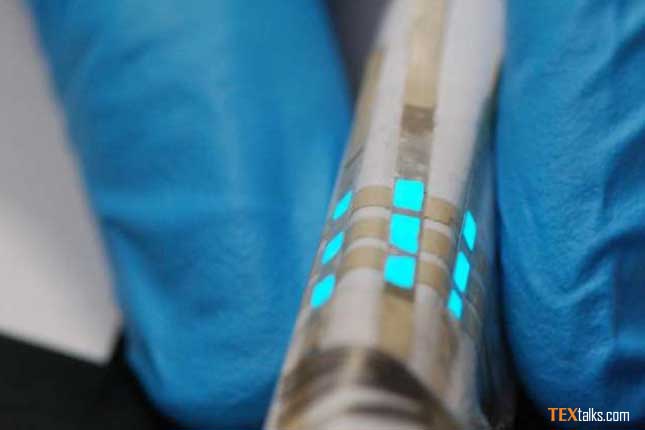Wearables are all the rage these days and researchers in Singapore say they can make them not only more efficient and stronger, but also more reliable. The team from the National University of Singapore (NUS) says they have made a robust conductive textile that can amplify the strength of wearables and improve the ability to conduct remote medical monitoring by healthcare professionals and family members.
The team has developed conductive materials based on comb-shaped strips of conductive fabrics using carbon, nickel, copper, gold, silver, or titanium, attached with adhesives to the surface of a finished garment.
The metamaterial receives information from non-textile sensors worn on the body, collating and directing this information via novel conductive textile strips integrated into a garment towards a separate internet-enabled device, such as a smartphone, relaying that information to external users, in what the team have termed a ‘wireless body sensor network.’ The conductive fabric corrals these data signals, confining them to just 10cm away from the body.
This matters because until now, wearable devices using radio wave technology such as Bluetooth or Wi-Fi have radiated signals outwards in all directions, losing signal energy. The new system keeps signals close to the body, where it can be picked up by a smartphone. Keeping signals tight also improves privacy and security, because external actors have much less opportunity to pick up potentially highly confidential medical data.
Assistant Professor John Ho, who led the team from the Institute for Health Innovation & Technology (NUS iHealthtech) and the NUS Faculty of Engineering, says the sensors worn on the body (like a smartwatch) or mounted on the skin (like a smart health patch) can use the conductive garment to communicate wirelessly between each other through radio-frequency signals, creating surface data waves across the body.
He adds that garments fitted with the metamaterial can collect and accumulate data that can map physiological signals such as body temperature, motion, cardiac signals, and blood oxygen.
Because sensors are separate, the garment can also be easily washed, more than many existing e-garments. Ho says the data collected and relayed to the internet could be delivered to healthcare professionals or concerned family members, thus boosting the development of a connected healthcare system and even access to the Internet of Things (IoT), when a user might need to send data to an internet-enabled device.
Smart clothes incorporating these sensors can be folded, washed, ironed and the strips can even be cut without impacting the conductivity, and they can interact with any conventional wireless device.
The project has received an international patent, says Ho, and the team is now partnering with companies to commercialise it, with a view to having it on the market for consumers within five years on the back of what Ho describes as “significant interest from textile and wearable technology companies”.



